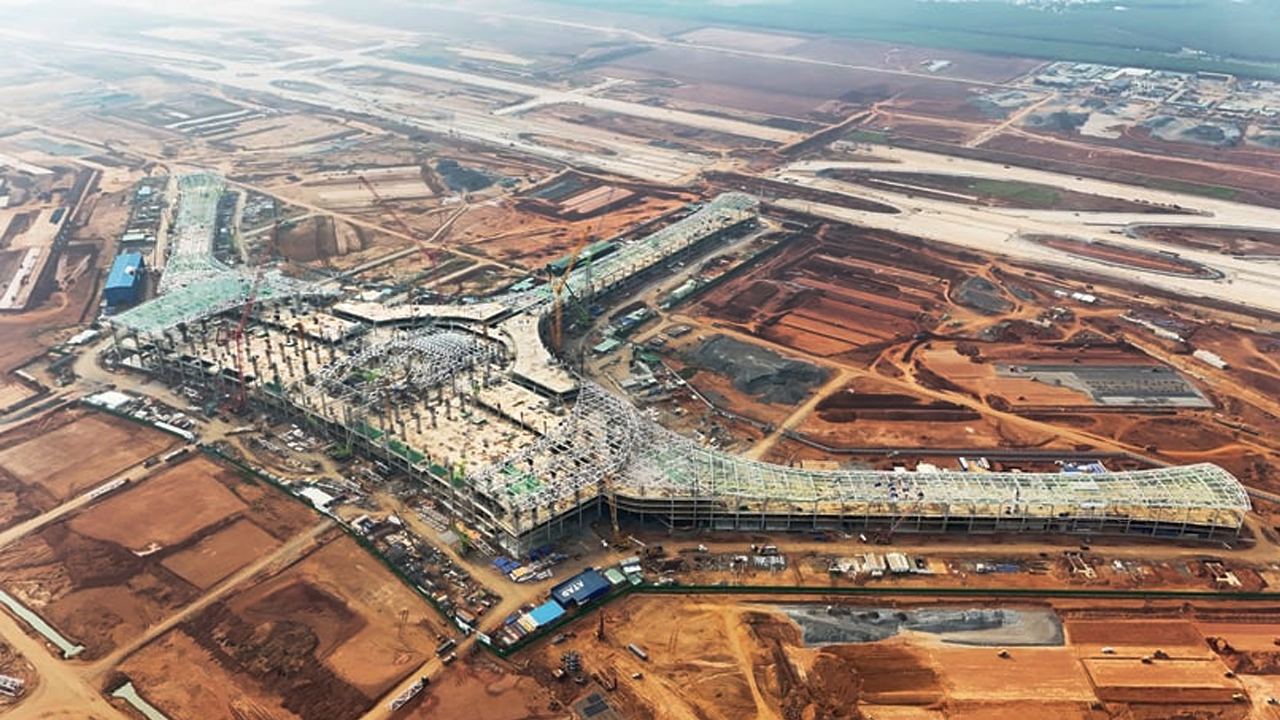Kansai Airport is Sinking
- Youtube Views 0 VIDEO VIEWS
Video narrated and hosted by Fred Mills. This video contains paid promotion for InEight.
KANSAI INTERNATIONAL AIRPORT in Japan, a landmark achievement in civil engineering, has just marked its 30th anniversary. Built on reclaimed land in Osaka Bay, it remains one of the most ambitious infrastructure projects of its kind. Yet, despite its groundbreaking accomplishments, the airport faces a significant challenge—it’s sinking.
Constructed in 1994, Kansai was the world’s first airport built entirely on an artificial island. It also boasts the longest terminal building globally and a near-flawless track record of luggage management. However, since its opening, the airport has gradually been subsiding, a problem engineers had anticipated but not to the current extent.

Above: Kansai International Airport in Osaka bay.
This issue has not stopped Kansai’s evolution. The airport is currently undergoing a USD $470M renovation aimed at increasing capacity and further cementing its role as a key regional transport hub. As questions loom over the airport’s future, its past achievements continue to inspire awe.
The idea of constructing an airport at sea was born out of necessity. By the late 1960s, Osaka, Japan’s second-largest city, had outgrown its landlocked airport. There was simply no room for expansion within the city, surrounded as it was by mountains. The only viable solution was a bold, untested one—build an airport offshore.
Construction began in 1987 after 20 years of planning. It was a colossal and expensive undertaking, with the total cost amounting to USD $14BN at the time—equivalent to nearly USD $40BN today. The project required the creation of an entirely new island, protected by an 11-kilometre seawall, and connected to the mainland by a bridge that alone cost USD $1BN.
While it may have seemed like a radical plan, Kansai’s success would pave the way for future airports constructed on water.
Despite these achievements, Kansai International has had to contend with an unexpected problem: the island beneath the airport is sinking faster than planned. Engineers initially projected that the island would settle by about eight metres over 50 years. Instead, the subsidence occurred at a much faster rate, sinking by more than 12 metres within the first eight years.
The underlying issue lies in the layers of clay beneath the artificial island. While engineers took steps to consolidate the upper layer, the deeper clay strata, riddled with pockets of sand, proved more unpredictable. This subsidence has added significant costs, with over USD $100M spent to maintain the island’s height above sea level.

Above: The interior of Kansai International.
Despite the sinking issue, Kansai’s design remains a testament to modern engineering. The terminal building, designed by renowned architect Renzo Piano, was created to withstand natural disasters, including earthquakes. In 1995, when the Kobe earthquake devastated nearby areas, Kansai remained intact and operational.
The airport’s design also allows for constant adjustments. The terminal sits on 900 jacks that can be raised or lowered to compensate for uneven settling. Even the runway, constructed with flexible asphalt rather than concrete, can absorb shifts without cracking.
In recent years, the airport has faced new hurdles. In 2018, Typhoon Jebi hit Osaka Bay, overwhelming the seawall and flooding the runway, causing a two-week disruption. This incident prompted further upgrades, including the raising of the seawall by an additional 2.7 metres to guard against future flooding.

Above: Kansai International Airport was flooded by typhoon Jebi.
Yet, the question remains: how long can these measures keep Kansai International operational? Experts predict that without significant intervention, the airport’s artificial islands could sink to sea level by 2067. The financial burden of continuously raising the runway and seawall may one day outweigh the benefits of keeping the airport in operation.
As Kansai International Airport celebrates three decades of service, it continues to be one of Asia’s busiest airports, handling millions of passengers annually. It is also set to play a key role in the upcoming Osaka Expo in 2025, where it will serve as a gateway for an anticipated 28 million visitors.
While the future may hold uncertainties, Kansai’s legacy as a revolutionary engineering project remains secure. Its construction has influenced the design of airports worldwide, and it continues to be a symbol of human ingenuity in the face of environmental challenges. Whether or not the airport will survive another 30 years, its place in history is assured.
This video contains paid promotion for InEight. Tackle your toughest projects with confidence using InEight’s project controls software for capital construction. Learn more here.
Video narrated and hosted by Fred Mills. Additional footage and images courtesy of Video Street View Japan, Kansai Airports Group, Hsin Lin, Airport Authority Hong Kong, Incheon Airport, Google Earth, Japan Ministry of Foreign Affairs, Al Jazeera, Microsoft Flight Simulator, Cat Walk, ANKOU1192, NIKKATSU, TOEI Company, SPARK, EURONEWS, CNA, EXPO 2025








